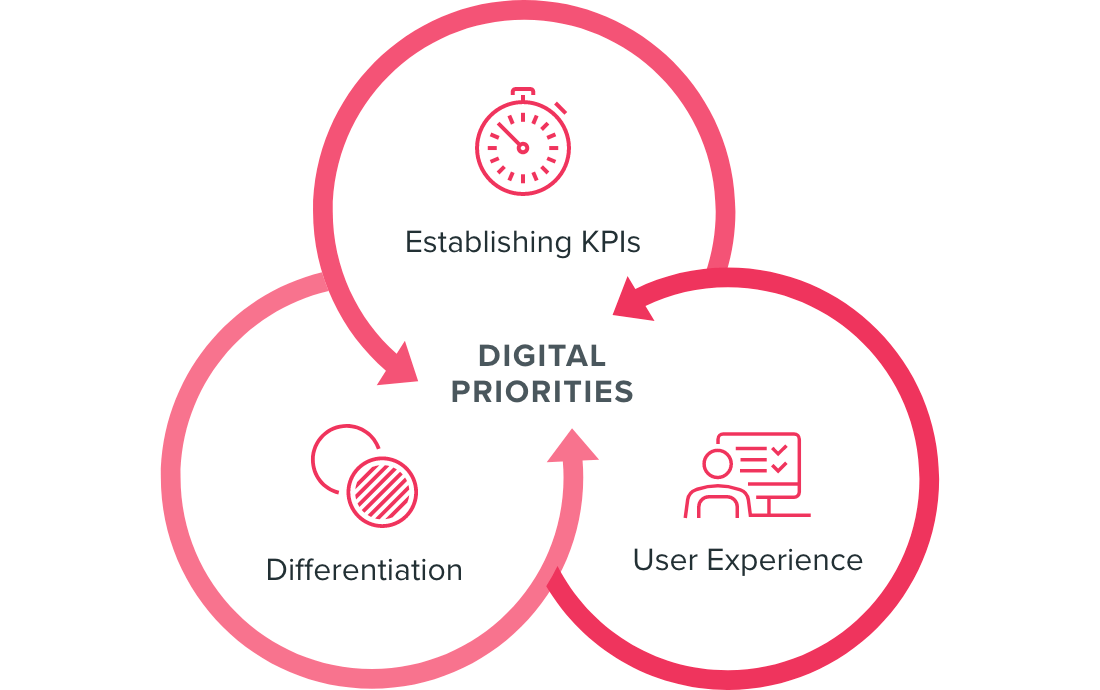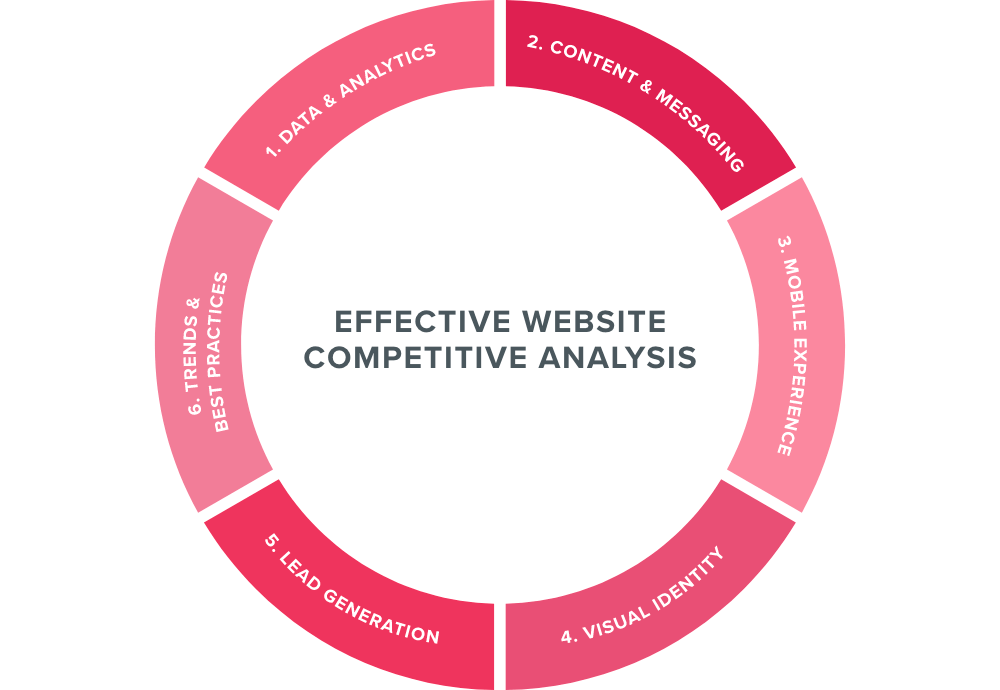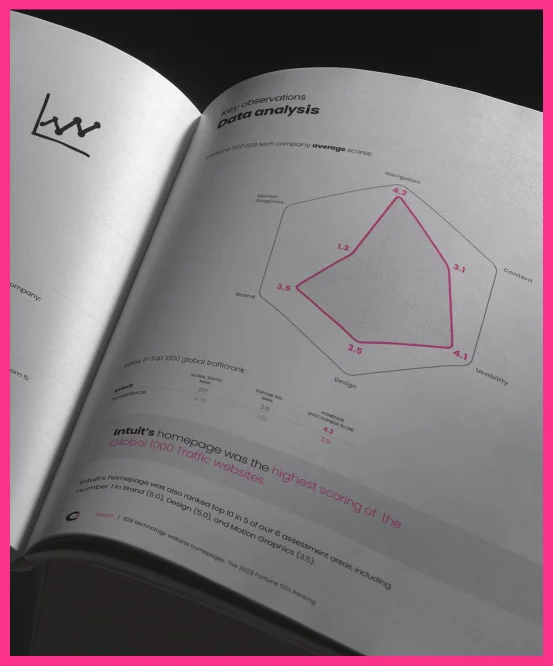As the digital economy has transformed the B2B tech industry into a global market, firms are finding a worldwide reach to feel like a double-edged sword.
On one hand, every company now has a potential customer base that’s larger than ever with the ability to transcend borders with products and services. However, at the same, your competition has grown just as expansive. With every project now only a Zoom meeting away, physical locations are no longer the deciding factor in purchasing decisions. All over the world, businesses with similar offerings to yours are working to convert your next customer.
To keep pace, your website needs a thorough competitive analysis before you or your web design agency makes any decisions about a redesign. With the right data, you can seize every opportunity to stand apart from the key players in your market and compete at a higher level.
The 3 Ways Competitive Analysis Informs Your Digital Priorities
At the discovery stage of a project, your web design agency gathers as much information as possible about your business. But along with the insights gained from your internal stakeholders, your agency gains clearer focus on the branding, content, user journeys, and lead generation approaches your website needs by looking outside your organization.
As Clear Digital starts with a new client, we ask them to identify who they feel are their direct competitors. Depending on the business, these can encompass organizations similar in size or giant, multinational firms whose competitive offering is just one of their multiple solutions. From there, we conduct our own market research to identify any outlying companies that merit consideration by our client.
By analyzing a focused pool of competitors, your business gains a better understanding of the right digital strategy. When conducted properly, a competitive analysis provides three benefits for your website design.

1. Differentiate Your Brand from Its Competition
Depending on your competitors’ messaging and positioning, you can identify any gaps available to your firm in its design approach.
Your website’s visual and content strategy offer multiple opportunities for your business to either create a distinct impression or align with established industry norms. Whatever route your firm chooses, you have to remain authentic to your brand identity to retain trust with your customer.
2. Establish Informed KPIs to Measure Against
Once you’ve determined the strongest competitors in your market, you can evaluate their website’s performance in relation to yours.
By identifying and comparing a few KPIs, you can identify benchmarks for your site’s performance. If your agency notes that the websites in your market experience user engagement at a level different from yours, it can better understand areas of improvement.
3. Design a Stronger User Experience
Evaluating the sites your customers are considering among your competitors provides guidance about their interests and browsing habits.
Depending on your market, your competitors may focus on attracting interest by facilitating product demos for their prospects. Once you understand what content appeals to your target audience, you can tailor your website so it meets and exceeds their expectations.
6 Must-Have Criteria for an Effective Website Competitive Analysis
As your agency gathers data about the other B2B firms in your market, they should focus on a few critical areas to inform an approach to a new design.

1. Data & Analytics
Along with offering valuable insights into your own site’s performance, tools such as SEMRush and Woorank illustrate details about your competitors and their audience. At Clear Digital, we look at your competitors’ site traffic and traffic sources as well as page load times and engagement metrics.
Even though the information these tools provide is not comprehensive, they still provide a big-picture understanding of your competition’s marketing, audience, and SEO approach. If, for example, your competitor is targeting a specific keyword and generating strong results, you can use that information to adjust your organization’s approach by focusing on another high-ranking search term.
2. Content & Messaging
Using marketing tools BuzzSumo and Alexa, we can crawl the content on your competitors’ websites and the pages that link to them. Analyzing your competition’s content helps illuminate the themes and narratives that are resonating with your prospects.
Understanding where your firm’s website and prospective audience overlaps with the competition – and where it doesn’t – provides a means to shape your content strategy. Beyond specific keywords, content messaging analysis illustrates the most common questions your customers are asking and how the other players in your industry provide answers.
3. Mobile Experience
With Mobile-first indexing, Google has placed a premium on providing a strong experience for users on mobile devices.
Tools such as Google PageSpeed Insights and Google Mobile-Friendly Test can determine how well your competitors are performing with the mobile audience. Depending on the results, your firm can recognize potential opportunities for your organization.
4. Visual Identity
The visual assets in your competitors’ logos and marketing material provide a wealth of information to inform how your firm can distinguish itself in the marketplace.
More than just color choices, all of your competitors’ iconography, website imagery, and downloadable assets tell a story about their brand identity and your market. Whether they’re doing a poor job of telling that story or remaining consistent in their design, their approach can illustrate areas where your site’s new design can stand out from the rest.
5. Lead Generation
From gated assets to forms that allow visitors to schedule a product demo or sales call, your website provides many ways to connect with customers.
The methods your competitors apply to generate leads provide useful insights into the norms of your industry and the efforts that have found success. The use of infographics, ROI calculators, and other resources in your market can also inform your approach to driving sales through your redesigned website.
6. Trends & Best Practices
From navigation to functionality, we analyze your competitor’s website to determine how well they conform or deviate from current design trends.
If the brands in your market are using more advanced design techniques such as motion graphics to highlight their offerings, your customers may view the approach as an industry norm. Or, conversely, if a brand like Apple is depicting its products in a way that’s caught your eye but none of your competitors, it may be too sophisticated or flashy for your audience’s needs.
You or your stakeholders may find a new design approach eye-catching, but it may not yet make sense for your firm’s website and its customers.

Competitor Data Forms a Building Block of Any Effective Redesign
With B2B tech firms now competing around the world for market share, your website can’t afford to overlook strategic insights on the path toward a redesign. When properly applied, competitive analysis informs your priorities about what works, what doesn’t, and what approaches are still to be explored in your industry.
Any area your design partner can recognize as an opportunity for your website to stand out from or expand upon your competitor’s success further solidifies the foundation of an effective redesign. If this sounds like an approach that will supply an edge for your business, let’s get started.






